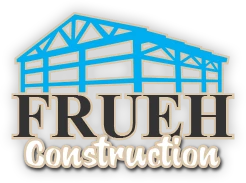
Pex-tubes carry hot water through a concrete floor or slab in a radiant heating system. The other option is to use radiant heat, which is an electrical heating element embedded in a thin concrete overlay that is then covered in tile, carpet, or wood flooring. Even heat distribution can be achieved by heating up the thermal mass of concrete, which acts as a radiator for the entire structure. If you are from Carbury, ND, then look no further than Frueh Construction. Get in touch with us at 701-693-5765.
RADIANT HEATING TECHNIQUES: WHAT ARE THEY?

Hydronic and electric heating are the two most common methods of heating concrete floors. Hydronic heating is the most cost-effective option for larger buildings because electric heating would require a significant amount of power. Concrete, because of its density and low conductivity, is excellent at retaining heat. When heat is applied to the concrete floor, it radiates upward, warming the entire space. The distribution of warm air by means of forced-hot-air systems is inequitable. The majority of the heat is absorbed by the ceiling. Using concrete-based radiant floor heating, you can lower your thermostat setting while still keeping your house warm, because the heat is concentrated at the floor.
THE BENEFITS OF RADIANT HEAT FROM A CONCRETE FLOOR
A lower thermostat setting can be used with a hydronic system to save energy. The lower half of the room retains more heat than the upper half. Throughout your building, there is no draught or uneven distribution of heat. Pollutants can’t get into the room because no air is being blown in. There are no air ducts, baseboards, or wall radiators because the system is completely hidden within the concrete. If you are from Carbury, ND, then look no further than Frueh Construction. Get in touch with us at 701-693-5765.


